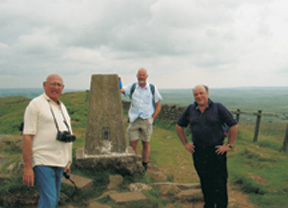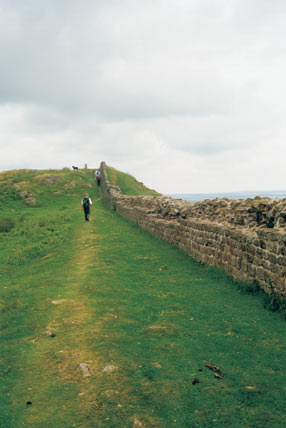Last summer, armed with a Wabash Faculty Development Grant, I flew to the UK to look at Roman sites and artifacts in preparation for my Roman Art and Archaeology course. I went to Rochester, gazed on St. John Fisher (no relation, but it is comforting to have a saint with the same name) and the place where the Romans crossed the Medway, and after exploring several other Roman sites, I met up with Scottish friends to walk Hadrian’s Wall.
We were myself, two lawyers, and Harvey the Dog. We had three cars amongst us and were able to use them well by placing them along the Wall for eight-mile segments, which was our daily average. We walked about 25 miles of the wilder western end of the Wall.
It was wonderful to stand on the Wall and gaze north in the direction taken by many of our ancestors, painted blue and shrieking with glee, to attack the rich and settled Roman province of Britannia.
The Wall is a remarkable feat of Roman engineering, running from Newcastle on the North Sea to just north of Carlisle on the Irish Sea: 73 miles in all with regular forts and milecastles throughout its length. I must say that there were moments when I really wondered how the Romans could create such a precipitous wall snaking up and down the hills of Northumberland. There were several museums along our rambles where we could see wooden tablets written by ordinary Romans, as well as their hobnailed sandals preserved in the damp climate of the area.
One tablet at Vindolanda says the following when translated from the Latin:
Claudia Severa to her Lepidina, greetings. I send you a warm invitation to come to us on September 11th, for my birthday celebrations, to make my day more enjoyable by your presence. Give my greetings to your Ceralis. My Aelius greets you and your sons. I will expect you, sister. Farewell, sister, my dearest soul, as I hope to prosper, and greetings.
It was a wonderful trip which gave me and my companions an unparalleled view of the northern reaches of the Roman Empire, mixed with the incredible reality of archaeological finds which speak to us directly today.
Professor Fischer retired from the Wabash classroom this spring. Read
a tribute from his former students in the next WM.

